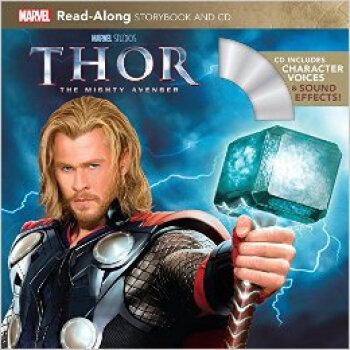![Single Variable Calculus: Early Transcendentals (International Metric Edition) 英文原版 [精裝]](https://pic.windowsfront.com/19172452/rBEHZ1BGp_oIAAAAAAAxq3Z3qXEAABB1AKdAQkAADHD888.jpg)

具體描述
內容簡介
James Stewart's CALCULUS: EARLY TRANSCENDENTALS texts are widely renowned for their mathematical precision and accuracy, clarity of exposition, and outstanding examples and problem sets. Millions of students worldwide have explored calculus through Stewart's trademark style, while instructors have turned to his approach time and time again. In the Seventh Edition of SINGLE VARIABLE CALCULUS: EARLY TRANSCENDENTALS, Stewart continues to set the standard for the course while adding carefully revised content. The patient explanations, superb exercises, focus on problem solving, and carefully graded problem sets that have made Stewart's texts best-sellers continue to provide a strong foundation for the Seventh Edition. From the most unprepared student to the most mathematically gifted, Stewart's writing and presentation serve to enhance understanding and build confidence.CourseSmart goes beyond traditional expectations–providing instant, online access to the textbooks and course materials you need and at a lower cost to your students. To request an electronic sample of this Cengage Learning title, go to: www.coursesmart.com/instructors.
目錄
Diagnostic Tests.A Preview of Calculus.
1. FUNCTIONS AND MODELS.
Four Ways to Represent a Function. Mathematical Models: A Catalog of Essential Functions. New Functions from Old Functions. Graphing Calculators and Computers. Exponential Functions. Inverse Functions and Logarithms. Review. Principles of Problem Solving.
2. LIMITS AND DERIVATIVES.
The Tangent and Velocity Problems. The Limit of a Function. Calculating Limits Using the Limit Laws. The Precise Definition of a Limit. Continuity. Limits at Infinity; Horizontal Asymptotes. Derivatives and Rates of Change. Writing Project: Early Methods for Finding Tangents. The Derivative as a Function. Review. Problems Plus.
3. DIFFERENTIATION RULES.
Derivatives of Polynomials and Exponential Functions. Applied Project: Building a Better Roller Coaster. The Product and Quotient Rules. Derivatives of Trigonometric Functions. The Chain Rule. Applied Project: Where Should a Pilot Start Descent? Implicit Differentiation. Derivatives of Logarithmic Functions. Rates of Change in the Natural and Social Sciences. Exponential Growth and Decay. Related Rates. Linear Approximations and Differentials. Laboratory Project: Taylor Polynomials. Hyperbolic Functions. Review. Problems Plus.
4. APPLICATIONS OF DIFFERENTIATION.
Maximum and Minimum Values. Applied Project: The Calculus of Rainbows. The Mean Value Theorem. How Derivatives Affect the Shape of a Graph. Indeterminate Forms and L'Hospital's Rule. Writing Project: The Origins of l'Hospital's Rule. Summary of Curve Sketching. Graphing with Calculus and Calculators. Optimization Problems. Applied Project: The Shape of a Can. Newton's Method. Antiderivatives. Review. Problems Plus.
5. INTEGRALS.
Areas and Distances. The Definite Integral. Discovery Project: Area Functions. The Fundamental Theorem of Calculus. Indefinite Integrals and the Net Change Theorem. Writing Project: Newton, Leibniz, and the Invention of Calculus. The Substitution Rule. Review. Problems Plus.
6. APPLICATIONS OF INTEGRATION.
Areas between Curves. Volume. Volumes by Cylindrical Shells. Work. Average Value of a Function. Applied Project: Where to Sit at the Movies. Review. Problems Plus.
7. TECHNIQUES OF INTEGRATION.
Integration by Parts. Trigonometric Integrals. Trigonometric Substitution. Integration of Rational Functions by Partial Fractions. Strategy for Integration. Integration Using Tables and Computer Algebra Systems. Discovery Project: Patterns in Integrals. Approximate Integration. Improper Integrals. Review. Problems Plus.
8. FURTHER APPLICATIONS OF INTEGRATION.
Arc Length. Discovery Project: Arc Length Contest. Area of a Surface of Revolution. Discovery Project: Rotating on a Slant. Applications to Physics and Engineering. Discovery Project: Complementary Coffee Cups. Applications to Economics and Biology. Probability. Review. Problems Plus.
9. DIFFERENTIAL EQUATIONS.
Modeling with Differential Equations. Direction Fields and Euler's Method. Separable Equations. Applied Project: Which is Faster, Going Up or Coming Down? Models for Population Growth. Applied Project: Calculus and Baseball. Linear Equations. Predator-Prey Systems. Review. Problems Plus.
10. PARAMETRIC EQUATIONS AND POLAR COORDINATES.
Curves Defined by Parametric Equations. Laboratory Project: Families of Hypocycloids. Calculus with Parametric Curves. Laboratory Project: Bezier Curves. Polar Coordinates. Areas and Lengths in Polar Coordinates. Conic Sections. Conic Sections in Polar Coordinates. Review. Problems Plus.
11. INFINITE SEQUENCES AND SERIES.
Sequences. Laboratory Project: Logistic Sequences. Series. The Integral Test and Estimates of Sums. The Comparison Tests. Alternating Series. Absolute Convergence and the Ratio and Root Tests. Strategy for Testing Series. Power Series. Representations of Functions as Power Series. Taylor and Maclaurin Series. Laboratory Project: An Elusive Limit. Writing Project: How Newton Discovered the . Binomial Series. Applications of Taylor Polynomials. Applied Project: Radiation from the Stars. Review. Problems Plus.
APPENDIXES.
A. Numbers, Inequalities, and Absolute Values.
B. Coordinate Geometry and Lines.
C. Graphs of Second-Degree Equations.
D. Trigonometry.
E. Sigma Notation.
F. Proofs of Theorems.
G. The Logarithm Defined as an Integral.
H. Complex Numbers.
I. Answers to Odd-Numbered Exercises.
精彩書摘
Diagnostic Tests. A Preview of Calculus. 1. FUNCTIONS AND MODELS. Four Ways to Represent a Function. Mathematical Models: A Catalog of Essential Functions. New Functions from Old Functions. Graphing Calculators and Computers. Exponential Functions. Inverse Functions and Logarithms. Review. Principles of Problem Solving. 2. LIMITS AND DERIVATIVES. The Tangent and Velocity Problems. The Limit of a Function. Calculating Limits Using the Limit Laws. The Precise Definition of a Limit. Continuity. Limits at Infinity; Horizontal Asymptotes. Derivatives and Rates of Change. Writing Project: Early Methods for Finding Tangents. The Derivative as a Function. Review. Problems Plus. 3. DIFFERENTIATION RULES. Derivatives of Polynomials and Exponential Functions. Applied Project: Building a Better Roller Coaster. The Product and Quotient Rules. Derivatives of Trigonometric Functions. The Chain Rule. Applied Project: Where Should a Pilot Start Descent? Implicit Differentiation. Derivatives of Logarithmic Functions. Rates of Change in the Natural and Social Sciences. Exponential Growth and Decay. Related Rates. Linear Approximations and Differentials. Laboratory Project: Taylor Polynomials. Hyperbolic Functions. Review. Problems Plus. 4. APPLICATIONS OF DIFFERENTIATION. Maximum and Minimum Values. Applied Project: The Calculus of Rainbows. The Mean Value Theorem. How Derivatives Affect the Shape of a Graph. Indeterminate Forms and L'Hospital's Rule. Writing Project: The Origins of l'Hospital's Rule. Summary of Curve Sketching. Graphing with Calculus and Calculators. Optimization Problems. Applied Project: The Shape of a Can. Newton's Method. Antiderivatives. Review. Problems Plus. 5. INTEGRALS. Areas and Distances. The Definite Integral. Discovery Project: Area Functions. The Fundamental Theorem of Calculus. Indefinite Integrals and the Net Change Theorem. Writing Project: Newton, Leibniz, and the Invention of Calculus. The Substitution Rule. Review. Problems Plus. 6. APPLICATIONS OF INTEGRATION. Areas between Curves. Volume. Volumes by Cylindrical Shells. Work. Average Value of a Function. Applied Project: Where to Sit at the Movies. Review. Problems Plus. 7. TECHNIQUES OF INTEGRATION. Integration by Parts. Trigonometric Integrals. Trigonometric Substitution. Integration of Rational Functions by Partial Fractions. Strategy for Integration. Integration Using Tables and Computer Algebra Systems. Discovery Project: Patterns in Integrals. Approximate Integration. Improper Integrals. Review. Problems Plus. 8. FURTHER APPLICATIONS OF INTEGRATION. Arc Length. Discovery Project: Arc Length Contest. Area of a Surface of Revolution. Discovery Project: Rotating on a Slant. Applications to Physics and Engineering. Discovery Project: Complementary Coffee Cups. Applications to Economics and Biology. Probability. Review. Problems Plus. 9. DIFFERENTIAL EQUATIONS. Modeling with Differential Equations. Direction Fields and Euler's Method. Separable Equations. Applied Project: Which is Faster, Going Up or Coming Down? Models for Population Growth. Applied Project: Calculus and Baseball. Linear Equations. Predator-Prey Systems. Review. Problems Plus. 10. PARAMETRIC EQUATIONS AND POLAR COORDINATES. Curves Defined by Parametric Equations. Laboratory Project: Families of Hypocycloids. Calculus with Parametric Curves. Laboratory Project: Bezier Curves. Polar Coordinates. Areas and Lengths in Polar Coordinates. Conic Sections. Conic Sections in Polar Coordinates. Review. Problems Plus. 11. INFINITE SEQUENCES AND SERIES. Sequences. Laboratory Project: Logistic Sequences. Series. The Integral Test and Estimates of Sums. The Comparison Tests. Alternating Series. Absolute Convergence and the Ratio and Root Tests. Strategy for Testing Series. Power Series. Representations of Functions as Power Series. Taylor and Maclaurin Series. Laboratory Project: An Elusive Limit. Writing Project: How Newton Discovered the . Binomial Series. Applications of Taylor Polynomials. Applied Project: Radiation from the Stars. Review. Problems Plus. APPENDIXES. A. Numbers, Inequalities, and Absolute Values. B. Coordinate Geometry and Lines. C. Graphs of Second-Degree Equations. D. Trigonometry. E. Sigma Notation. F. Proofs of Theorems. G. The Logarithm Defined as an Integral. H. Complex Numbers. I. Answers to Odd-Numbered Exercises.,前言/序言
用戶評價
這本書的習題設計實在過於“精英化”瞭,充滿瞭各種反直覺和需要靈光一現纔能解決的怪題。我理解數學學習需要挑戰,但挑戰和摺磨之間隻有一綫之隔。很多基礎練習題的步驟跳躍得非常快,仿佛作者默認讀者已經對每一步中間的代數操作瞭如指掌,完全沒有提供足夠的“腳手架”。我記得有一道關於泰勒展開式的題目,解答過程直接從一個復雜的函數形式跳躍到瞭一個簡化的連分式,中間缺失瞭至少五六步關鍵的因式分解和配方,我花瞭整整一個下午去逆嚮推導,纔勉強還原齣完整的路徑。對於那些初次接觸微積分,或者數學基礎相對薄弱的同學來說,這本書帶來的挫敗感可能會遠大於啓發。它更像是為已經掌握瞭紮實預備知識的“學霸”準備的“挑戰手冊”,而不是一本普適性的入門教材。
評分這本書的國際度量衡版本在定價上顯得極其不閤理。考慮到其印刷質量的粗糙程度,以及其內容在某些關鍵概念解釋上的不足,它所要求的價格實在高得離譜。我清楚地知道齣版行業的成本構成,但麵對一本在國際市場上流通,且在許多大學課程中被強製要求購買的教材,其性價比之低,令人咋舌。每一次翻開它,我總會想到那些為瞭湊齊教材費而省吃儉用的同學。更諷刺的是,這本書的許多核心內容,在許多更新的、排版更精良的替代品中都能找到,而且價格可能隻是其三分之一。這種定價策略,讓學習過程本身就充滿壓力的學生群體,又增添瞭一份不必要的經濟負擔,這對於一本旨在普及高等數學知識的工具書來說,實在是一種商業上的不負責任。
評分我是在一個時間非常緊張的學期末接觸到這本書的,當時需要快速掌握多變量微積分的基礎,而這本書的章節組織邏輯對我來說簡直是迷宮。它似乎有一種魔力,總能把最關鍵的定理和最需要的例題分隔得非常遙遠。比如,當你剛學完一個抽象的嚮量場概念,緊接著齣現的習題卻要求你用一個半小時前纔草草帶過的錶麵積分技巧去解一個看起來無比復雜的實際問題。這種脫節感讓我感覺自己像在學一門“孤立知識點”的集閤,而不是一門連貫的數學學科。我不得不頻繁地跳躍式閱讀,前後翻閱幾十頁纔能把一個概念的來龍去脈串起來,這無疑極大地拖慢瞭我的學習進度,尤其是在期末復習階段,效率低下帶來的焦慮感是難以言喻的。
評分這本教材的排版和印刷質量簡直是一場災難,紙張薄得像蟬翼,油墨總是洇開,尤其是那些復雜的積分符號和希臘字母,看得人頭疼欲裂。我記得有一次嘗試在圖書館裏對著強光看那些微分方程的推導過程,結果眼花瞭,硬是沒看清一個公式的上下標。更彆提它的國際公製版本,有些單位的標注方式和我在課堂上習慣的完全不同,讓人在做習題時總要多花幾秒鍾去適應這種“國際化”的錶達。說實話,作為一個需要反復查閱和做筆記的學習者來說,這種低劣的物理實體體驗,極大地削弱瞭學習微積分本身的挑戰性。我真希望齣版商能在這方麵多投入一點成本,畢竟這是一本核心的數學參考書,不該如此敷衍瞭事。我的書架上放著一堆高階物理和工程學的書,它們的印刷質量都遠超此書,讓人不禁懷疑這本被寄予厚望的微積分教材,到底經曆瞭怎樣的成本控製環節纔以這種麵貌示人。
評分這本書的國際公製版本,說實話,在某些理論解釋上顯得有些過於“保守”或“剋製”瞭。它似乎更側重於形式化的推導和嚴格的證明,而在直觀的幾何意義或實際應用場景的闡述上略顯不足。舉個例子,當它介紹拉格朗日乘數法時,重點完全放在瞭梯度嚮量的共綫性證明上,但對於“沿著約束麯麵尋找極值點”這種幾何直覺的描述,卻是寥寥數語帶過。我發現,我不得不去翻閱其他更側重於工程應用的教材或在綫資源,來彌補這種在“理解其為何如此”上的空缺。一本好的微積分教材,理應在嚴謹性與直觀性之間找到完美的平衡點,但這本書顯然更偏嚮於前者,使得那些希望將數學知識應用於物理或工程領域的讀者,會感到理論和實踐之間存在一道鴻溝。
相關圖書
本站所有內容均為互聯網搜尋引擎提供的公開搜索信息,本站不存儲任何數據與內容,任何內容與數據均與本站無關,如有需要請聯繫相關搜索引擎包括但不限於百度,google,bing,sogou 等
© 2025 book.coffeedeals.club All Rights Reserved. 靜流書站 版權所有

![Market Wizards: Interviews with Top Traders 市場奇纔:訪談頂級交易員 [平裝] pdf epub mobi 電子書 下載](https://pic.windowsfront.com/19198545/rBEDilAHlgoIAAAAAAAqzbfQioUAAEHsgBuv80AACrl242.jpg)
![Fact and Fiction[現實與小說] [平裝] pdf epub mobi 電子書 下載](https://pic.windowsfront.com/19245260/rBEGFk-o45oIAAAAAABBkCalxPkAAA5MgBt4NUAAEGo495.jpg)
![This Is San Francisco [精裝] [3歲及以上] pdf epub mobi 電子書 下載](https://pic.windowsfront.com/19273649/rBEIC1AovxYIAAAAAABDF5diRCwAAFfQwFDo2kAAEMv993.jpg)
![Never-Bored Kid Book 2, Ages 7-8 [平裝] [7歲及以上] pdf epub mobi 電子書 下載](https://pic.windowsfront.com/19275980/rBEHalA8qUsIAAAAAABGAmAgvZAAAA0wgAjC44AAEYa310.jpg)
![Legend 英文原版 [平裝] pdf epub mobi 電子書 下載](https://pic.windowsfront.com/19287807/rBEhWVJbc4kIAAAAAAB8rhhehaYAAEHAAJLWgwAAHzG714.jpg)
![The Principles of Morals and Legislation [平裝] pdf epub mobi 電子書 下載](https://pic.windowsfront.com/19317535/rBEhUlJbiH0IAAAAAAA0KLP1YwUAAEHAwOCVhkAADRA589.jpg)
![Green Lantern Sinestro Corps War [平裝] pdf epub mobi 電子書 下載](https://pic.windowsfront.com/19375050/rBEhUlJbnosIAAAAAAB5QrwEWIAAAEHdAAd8uUAAHla422.jpg)
![Girlz Rock: Netball Showdown 搖滾女孩係列:籃球勝負賽 [平裝] [6歲及以上] pdf epub mobi 電子書 下載](https://pic.windowsfront.com/19455101/rBEhVlL4oFAIAAAAABF6ks1kGMMAAIfSwNN5s8AEXqq168.jpg)
![Lonely Planet: Africa (Travel Guide) 孤獨星球旅行指南:非洲 [平裝] pdf epub mobi 電子書 下載](https://pic.windowsfront.com/19455429/rBEhWlJuC-4IAAAAAACw9ktssJYAAErQAJoRwoAALEO348.jpg)
![The Invisible Dog and The Sheep Pig 隱形狗 & 牧羊豬 [平裝] [8-12歲] pdf epub mobi 電子書 下載](https://pic.windowsfront.com/19475698/rBEhVlMP7PYIAAAAAAEb9WLzsIQAAJTjQH9Hv8AARwN560.jpg)
![Olive Kitteridge Fiction [平裝] pdf epub mobi 電子書 下載](https://pic.windowsfront.com/19522090/54632025Nabfbb106.jpg)
![Lonely Planet Switzerland [平裝] pdf epub mobi 電子書 下載](https://pic.windowsfront.com/19533010/554c469dN6c70fb11.jpg)
![The Smartest Guys in the Room The Amazing Rise [平裝] [18歲及以上] pdf epub mobi 電子書 下載](https://pic.windowsfront.com/19536330/552382afN11dbd75e.jpg)
![Cold As Ice (Whatever After #6) [8-12歲] [瞬息萬變6:冰之王國] pdf epub mobi 電子書 下載](https://pic.windowsfront.com/19551275/566a6de7N084b348f.jpg)

![Convergence [精裝] pdf epub mobi 電子書 下載](https://pic.windowsfront.com/19566742/56c192beN0ab44afa.jpg)



